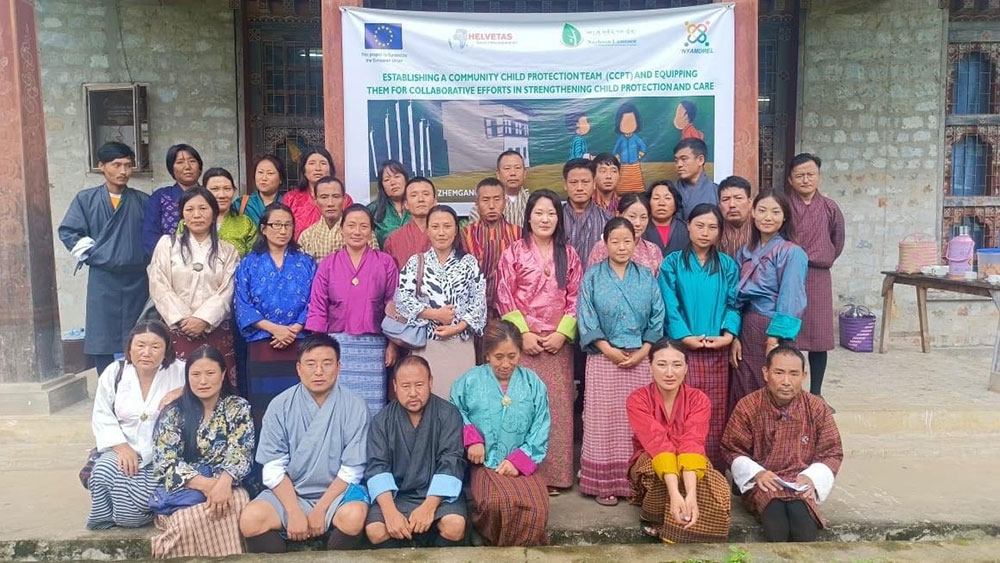Yangyel Lhaden
Trong gewog in Zhemgang has formed a community child protection team (CCPT) in each of its five chiwogs to improve reporting mechanisms, increase awareness, and provide quick responses to child protection issues.
The need for such a team was raised when 25 children from the gewog attended a workshop with Nazhoen Lamtoen, an NGO dedicated to supporting children and youth, last December. They said that the presence of such a team could enhance their safety and improve the reporting mechanism of child safety issues.
The teams are in Gomphu, Subrang, Tshangla-Zurphy, Tama-Berti, and Dangkar-Trong of Trong gewog to strengthen child protection initiatives. They also launched CCPT manual and allocated seed funds to the teams, offering guidance and initial support for child protection activities in the chiwogs.
The gewog’s mangmi heads the team in each chiwog, the tshogpa serves as a member secretary, and one of the members is appointed as a treasurer. CCPT is merged with Dzongkhag Woman and Children Committee (DWCC).
The teams are also expected to collaborate with authorities and empower community members.
This initiative is part of Nazhoen Lamtoen’s one-year project titled “Advocacy on Child Protection to Create an Enabling Environment for Children” funded by Helvetas Bhutan.
Nazhoen Lamtoen’s executive director, Thinley Tobgyel, said that the project is an initiative to advocate for the children, by the participating children themselves about child protection concerns to their respective communities, local government, and central government.
A five-day training was conducted, during which four specific tools were used to help children map child protection concerns. Five children each from five chiwogs of Trong gewog took part in the training.
“The children also presented their findings to advocate their concerns to the local and dzongkhag offices,” Thinley Tobgyel said.
Other major issues children raised were poverty, social problems, domestic violence within their households, violence directed towards them, sanitation issues, insufficient financial support for education, and a lack of recreational opportunities in their community, among others.
“Due to a lack of awareness and advocacy at the chiwog level, child protection issues were rarely registered with DWCC,” Thinley Tobgyel said. “The CCPT will serve as a vital referral point, ensuring that assistance swiftly reaches those who need it most.”
The integration of CCPT with DWCC is aimed at boosting coordination and cooperation between local CCPTs and the dzongkhag-level child protection authority.
In the remote rural areas of Bhutan, children grapple with extreme resource shortages, poverty, and the acceptance of violence as a cultural norm, according to Nazhoen Lamtoen’s report on the project. “These challenging social and economic conditions exacerbate the issue of violence against children, detrimentally affecting their physical and mental development.”
“The children are going to come to Thimphu to advocate their concerns to the National Council members before the project ends this month,” Thinley Tobgyel said.


